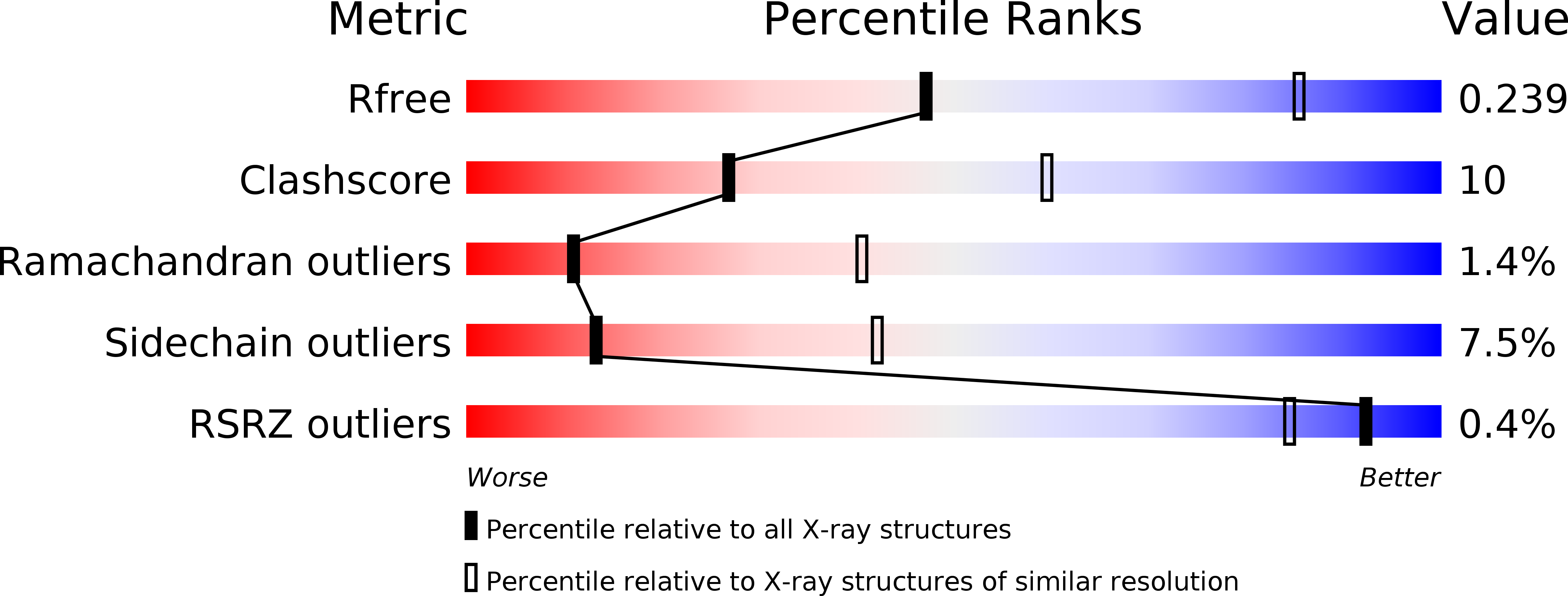An Ion Selectivity Filter in the Extracellular Domain of Cys-loop Receptors Reveals Determinants for Ion Conductance
Hansen, S.B., Wang, H.L., Taylor, P., Sine, S.M.(2008) J Biol Chem 283: 36066-36070
- PubMed: 18940802
- DOI: https://doi.org/10.1074/jbc.C800194200
- Primary Citation of Related Structures:
3GUA - PubMed Abstract:
Neurotransmitter binding to Cys-loop receptors promotes a prodigious transmembrane flux of several million ions/s, but to date, structural determinants of ion flux have been identified flanking the membrane-spanning region. Using x-ray crystallography, sequence analysis, and single-channel recording, we identified a novel determinant of ion conductance near the point of entry of permeant ions. Co-crystallization of acetylcholine-binding protein with sulfate anions revealed coordination of SO4(2-) with a ring of lysines at a position equivalent to 24 A above the lipid membrane in homologous Cys-loop receptors. Analysis of multiple sequence alignments revealed that residues equivalent to the ring of lysines are negatively charged in cation-selective receptors but are positively charged in anion-selective receptors. Charge reversal of side chains at homologous positions in the nicotinic receptor from the motor end plate decreases unitary conductance up to 80%. Selectivity filters stemming from transmembrane alpha-helices have similar pore diameters and compositions of amino acids. These findings establish that when the channel opens under a physiological electrochemical gradient, permeant ions are initially stabilized within the extracellular vestibule of Cys-loop receptors, and this stabilization is a major determinant of ion conductance.
Organizational Affiliation:
Department of Pharmacology, Skaggs School of Pharmacy and Pharmaceutical Sciences, University of California, San Diego, La Jolla, California 92093-0650, USA.















